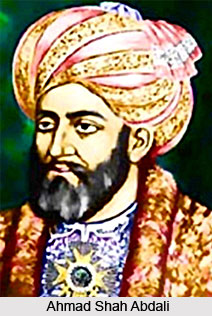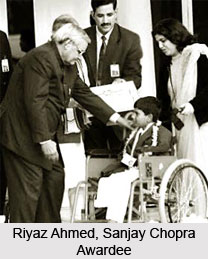 Role of ethics in Ancient Indian Army was really significant. The shastras did not allow the liberty of striking below the belt. At times the ethical strategies also ensured that if one of the parties having signed a treaty of peace showed signs of infidelity it was to undertake another oath by fire. There was a sharp contrast regarding the ethical code of ancient army as compared to the present day ethical standards where a peace treaty has no value and the document is thrown aside if it suits either party as soon as it is written. In spite of these guiding principles other means were also employed. Different means were employed during the warfare and for winning over the principal officers of the enemy.
Role of ethics in Ancient Indian Army was really significant. The shastras did not allow the liberty of striking below the belt. At times the ethical strategies also ensured that if one of the parties having signed a treaty of peace showed signs of infidelity it was to undertake another oath by fire. There was a sharp contrast regarding the ethical code of ancient army as compared to the present day ethical standards where a peace treaty has no value and the document is thrown aside if it suits either party as soon as it is written. In spite of these guiding principles other means were also employed. Different means were employed during the warfare and for winning over the principal officers of the enemy.
For an open battle the strategies employed mainly included threatening in one direction, assault in another and destruction of the enemy while he was careless. It was claimed that an arrow shot by an archer may or may not kill even a single man but skilful conspiracy could destroy even those who were in the womb. Great stress was laid on obtaining a favourable position for own side at all costs. More emphasis was given on supreme excellence that included breaking the resistance of the enemy without fighting. One form of feint was make a false impression of defeat by retreating against the enemy who was entrenched and having lured him into an unfavourable position on own ground of choice launch an attack. The Sikhs once used such a feint against Ahmad Shah Abdali and thus tired him out to obtain a favourable decision for their side. When frontal attack was considered unfavourable one was required to strike from behind. When attack from the rear was inadvisable one was to strike from the front.
Cutting of the tail or the line of communication and capturing or harassing the rear forces are some of the time-worn injunctions in strategy. Even a slight annoyance in the rear has its effect and must be pressed home. Constant harassing by dominating the area between the opposing forces has also paid many a dividend. At the present time when the implements of war have become very advanced, harassing of the enemy is done by artillery and mortar fire at all hours of the day and night, bombing and attacking from the air, constant policing deep inside the enemy territory and employment of fifth-columnists. The whole aim is to dominate and show to the enemy one`s own superiority and reduce his will to fight. This not only means gaining of valuable time but also lowers the morale of the enemy. Having made the enemy sleepless by harassing him continuously at night one was required to attack during the day when he was weary from want of sleep and exhausted due to heat. There was a provision for a war-of-nerves by employing war-cries, jubilant shouts of victory and the declaration of the enemy`s defeat.
One injunction of Kautilya is of a doubtful nature - when a broken army, reckless of life, resumes the attack, its fury becomes irresistible; hence one should not harass the broken army of the enemy. On the other hand it is all the more essential that an advantage once gained must be pressed home until a decision is obtained. In other words, the momentum of attack must be maintained so that the enemy does not get time to breathe and recover. The safest and wisest course when one has knocked the wind out of his adversary is to go straight at his heart. However well trained an army one may have a reverse which always brings a lowering of the team spirit and consequent loss of fighting efficiency. Before a campaign the commander was required to take all the men into his confidence by addressing them personally. This has now taken the form of an `Order of the Day` with the same end in view. Ministers and priests also had important functions to perform in this connection as they could appeal to the men much more.
All these attempts were directed towards preparing the men for battle by raising their morale. Prayers had to be offered by priests and astrologers. Before the battle the senapati would offer rewards and honours for bravery on the field of battle. All the orders of the senapati had to be made known to the leaders of the smallest unit. Thus, all warfare used to take place as per the laid down principles, dharma and the accepted ethical code of ancient Indian Army.






